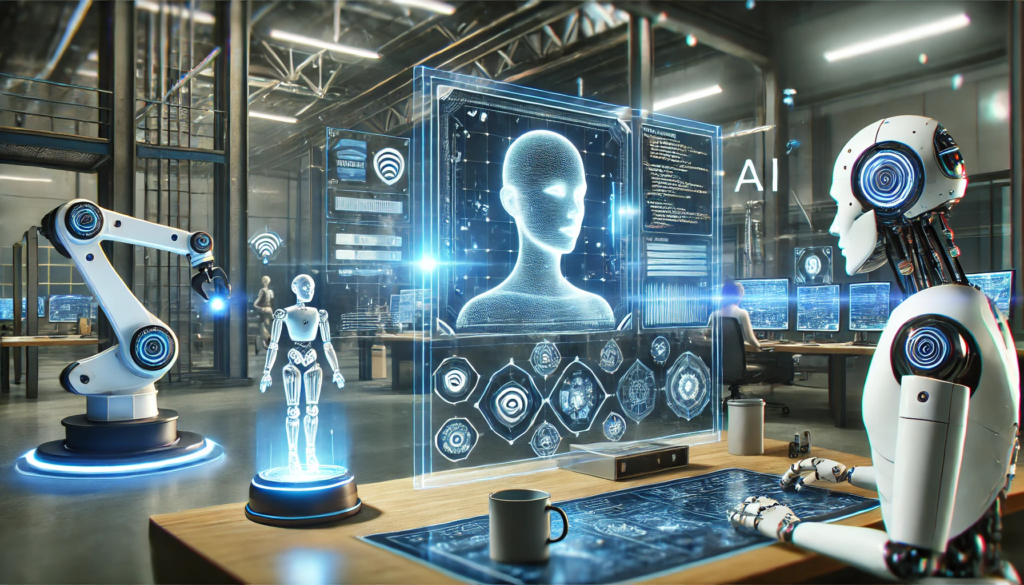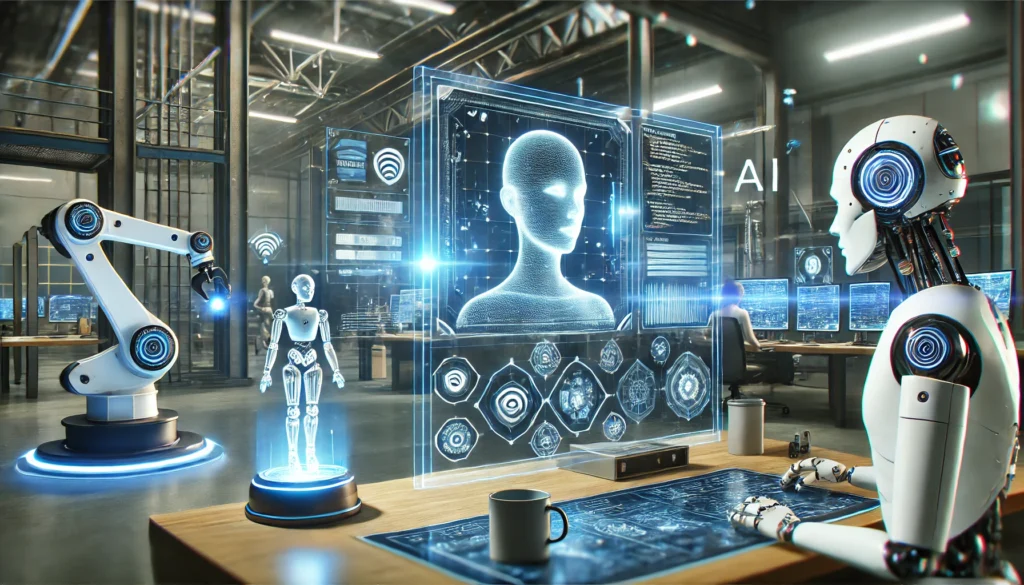Robotics
affective computing, AI and human emotions, AI companionship, AI emotional intelligence, AI in robotics, artificial emotions, emotional AI, emotional responses in robots, emotional robots, emotional robots in healthcare, emotional support robots, empathy in robotics, empathy-based robotics, future of emotional robots, human-like robots, human-robot interaction, machine empathy, robot behavior, robot consciousness, robot empathy, robot human connection, robot interaction challenges, robot psychology, robotic emotions, robots and emotions, robots and human relationships, robots in elder care, robots in social care, robots in therapy, robots with feelings, social robots
fxmwj
0 Comments
Can Robots Have Emotions?
As robotics and artificial intelligence (AI) technology advance, one of the most fascinating and philosophical questions arises: Can robots have emotions? While robots are becoming increasingly sophisticated and capable of performing complex tasks, they are still far from experiencing emotions in the way humans do. However, robots can be programmed to simulate emotions, respond to emotional cues, and interact with humans in ways that seem emotionally intelligent. In this article, we will explore what emotions are, how robots “simulate” emotions, and the limitations of robots in terms of genuine emotional experiences.
1. What Are Emotions?
Emotions are complex psychological and physiological responses to stimuli that help humans and animals react to their environment. They are often linked to our consciousness, self-awareness, and social interactions. Humans experience a wide range of emotions such as happiness, sadness, anger, love, and fear. Emotions are not just feelings; they also influence our thoughts, behaviors, and decisions.
For a robot to “have” emotions in the traditional sense, it would need to experience feelings in response to stimuli. This requires a level of consciousness, subjective experience, and self-awareness, which robots do not currently possess.
2. Robots and Emotional Simulation

While robots do not actually “feel” emotions, they can be designed to simulate emotional responses. This simulation can make robots appear to be emotionally intelligent, which can enhance human-robot interaction, making it more natural and engaging. There are several ways in which robots simulate emotions:
- Facial Expressions: Some robots, such as humanoid robots, are designed with facial expressions that mimic human emotions. For example, a robot might smile when it “feels” happy or show a frown when it is “sad.” These expressions are programmed based on the context or interactions with humans but do not represent genuine emotional states.
- Voice Modulation: Robots can be programmed to alter their tone of voice to reflect different emotions. For example, a virtual assistant may speak more cheerfully when responding to a friendly greeting or more somberly when delivering bad news. This use of voice modulation can create a sense of empathy, even though the robot is not actually feeling anything.
- Behavioral Cues: Robots can also simulate emotional responses through actions or body language. For instance, a robot might act excited by moving quickly and energetically, or it might appear “sad” by slowing down its movements or slumping its body. These behaviors are designed to reflect emotional states but are not based on real feelings.
3. Emotional AI and Human-Robot Interaction
The field of affective computing, or emotional AI, focuses on developing systems that can recognize, understand, and simulate human emotions. Affective computing is making strides in improving human-robot interactions by allowing robots to recognize human emotions through facial expressions, body language, and voice. This recognition enables robots to respond in ways that appear emotionally intelligent.
For example:
- Robots in Healthcare: Robots designed for healthcare applications, such as elderly care or therapy robots, can detect emotional cues in patients. If a patient seems upset or anxious, the robot might respond with comforting language or calming gestures, creating a sense of companionship and emotional support. This is especially useful in situations where human interaction might be limited.
- Companion Robots: Some robots, like social robots, are created to offer emotional companionship to individuals, especially the elderly or people living with disabilities. These robots can simulate empathy and engage in conversations that make people feel understood, reducing feelings of loneliness or isolation.
- Customer Service Robots: In the retail or service industries, robots equipped with emotional AI can recognize customer frustration or satisfaction through tone of voice and adjust their responses accordingly, improving customer experience.
4. The Limitations of Emotional Robots

Despite the impressive advancements in emotional simulation, robots are still far from truly experiencing emotions. Here are the limitations:
- Lack of Consciousness: Emotions in humans arise from consciousness—our awareness of ourselves and our experiences. Robots, however, operate based on pre-programmed instructions, algorithms, and learned patterns from data. They do not have subjective experiences or self-awareness, which means they cannot actually “feel” emotions in the way humans do.
- No Emotional Understanding: Robots may be able to simulate emotional reactions, but they do not have an understanding of those emotions. For example, a robot might say something comforting to a person who is upset, but it does not understand the meaning of the words or the depth of the emotion. The robot’s response is based on patterns and programming, not genuine empathy.
- Ethical Concerns: There are ethical questions surrounding robots that simulate emotions, particularly in caregiving and therapeutic roles. For instance, if a robot is designed to act empathetic, does it mislead humans into thinking that the robot cares about their well-being? Can robots form genuine emotional connections, or do they merely mimic human behavior for practical purposes?
- Human Expectations: The more robots simulate emotions, the more humans may expect them to act emotionally intelligent or even form relationships. However, this could lead to disappointment or confusion when people realize that the robot’s emotional responses are simply programmed behavior and not a reflection of any actual feelings.
5. Can Robots Ever Truly Have Emotions?
The possibility of robots truly having emotions is a philosophical and scientific question that is still very much up for debate. While AI and robotics are making incredible strides in simulating emotions, the concept of robots experiencing feelings remains speculative. Emotions are deeply connected to human consciousness, which robots currently do not possess.
Some futurists and researchers believe that as AI and robotics continue to evolve, there could be a possibility of creating machines with a form of artificial consciousness that could allow robots to experience emotions. However, this would require major breakthroughs in fields like AI, neuroscience, and philosophy of mind, which are still in early stages.
Also Read : What Is the Future of Robotics?
Conclusion
Robots today can simulate emotions in ways that enhance human interaction, create more engaging experiences, and provide emotional support in specific contexts like healthcare and companionship. However, they do not actually “feel” emotions, as they lack consciousness, self-awareness, and the complex biochemical processes that underpin human emotions. As robotics and AI continue to develop, robots may become even more sophisticated in mimicking emotional responses, but for now, the emotions that robots display are purely artificial and designed for specific functions, not true feelings.









Post Comment